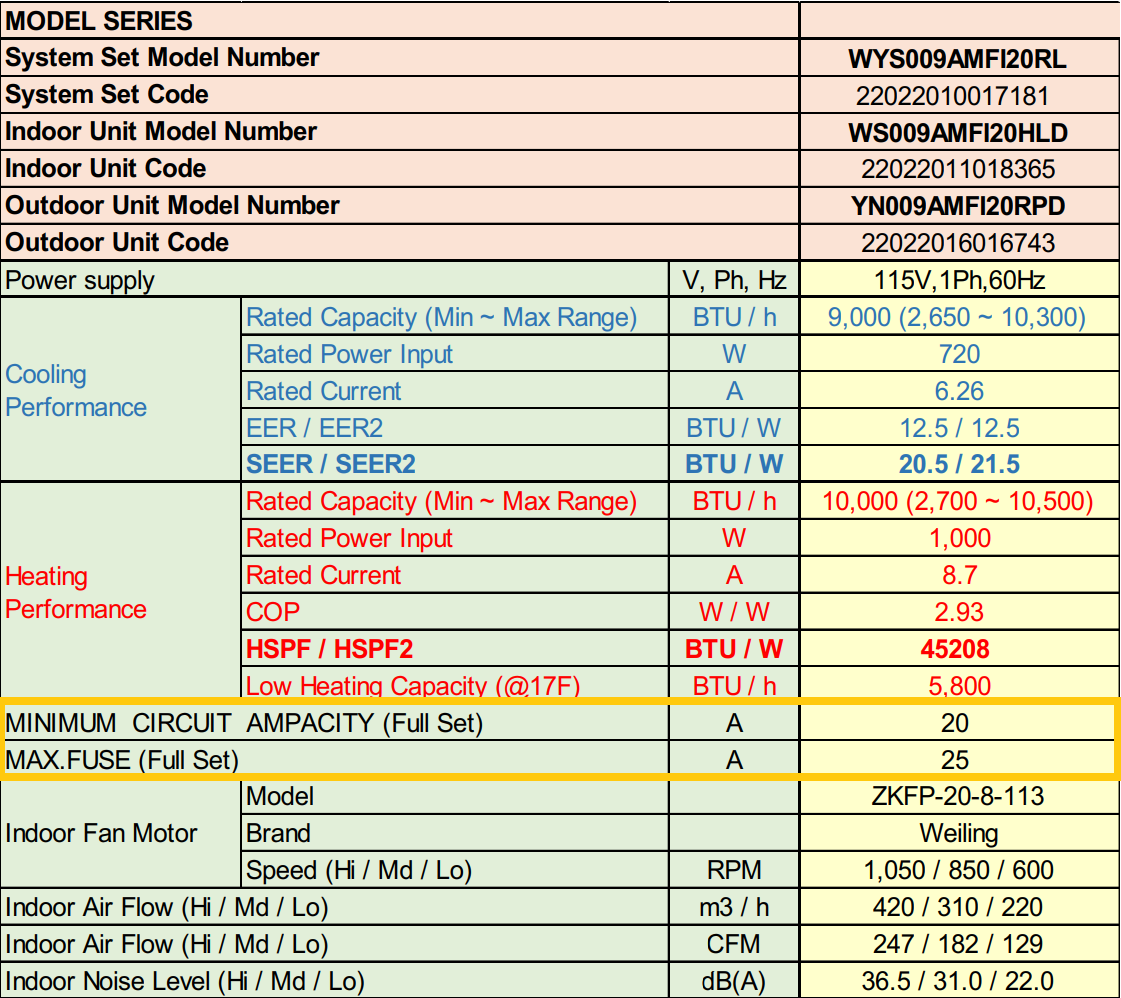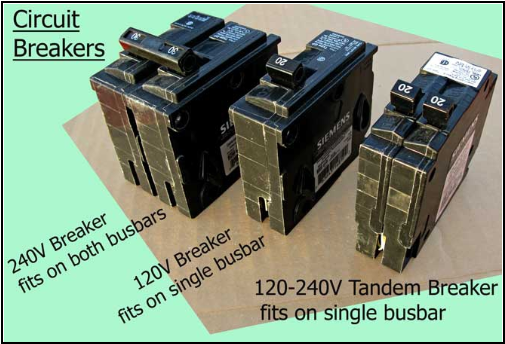Determine the Breaker Size and Wire Needed for Your SystemUpdated 4 days ago
Introduction
Use these three methods to determine the breaker size and type needed for your Pioneer system. After determining the breaker size and type, you can figure out which wire size you need for your system.
Breaker Size
Check the product page
- Go to the product page.

- Scroll down to the Outdoor Unit Data section.
- Most models list the breaker size.
Check the technical brochure
- Go to the product page.
- Scroll down to the Manuals & Downloads section.

- Open the Technical Brochure section.
- Scroll down to the page providing technical data on the system. Note: In the example below, 20A or 25A breakers are acceptable.

- Locate your model.
- Find the “Minimum Circuit Ampacity” and “Max Fuse” rows. Note: Minimum Circuit Ampacity refers to lower limit of the breaker size. Max Fuse refers to upper limit of the breaker size. Breakers typically come in sizes that end in 0 or 5, such as 20/25/30/35/40A. For more information on Minimum Circuit Ampacity and Max Fuse, see the table below:
The key difference between these two terms is that the "Minimum Circuit Ampacity" is concerned with the normal, continuous operating current of the appliance and the capacity of the circuit wiring. The "Max Fuse/Breaker" is concerned with protecting the appliance and circuit from abnormal, excessive current conditions. Both of these specifications must be adhered to when installing an electrical appliance to ensure its safe operation.Minimum Circuit AmpacityMax Fuse/BreakerThis term refers to the minimum current carrying capacity of the circuit in which the appliance should be installed. It is specified to ensure the wiring of the circuit can handle the continuous load that the appliance will place on it, thus preventing overheating of the wire, which could cause a fire. Ampacity is a term that combines 'ampere' (a unit of electrical current) and 'capacity', implying the maximum amount of current a conductor can carry before its temperature exceeds a safe limit.This term refers to the maximum rating of the overcurrent protective device, like a fuse or circuit breaker, that should be used in the circuit with the appliance. This rating is given to ensure that in the event of a short circuit or other malfunction causing excessive current, the fuse will blow or the circuit breaker will trip, thus protecting the appliance and the circuit from damage. - Select the breaker compatible with the numbers displaying in the Technical Data page.
Check the system before installation
We recommend confirming the Minimum Circuit Ampacity and Max Fuse before installing the system. Online information may be inaccurate or outdated. You can locate the figure including the information on the outdoor unit for mini split installations, as well as the outdoor and indoor units for central split installations. An example from a mini split outdoor unit
An example from a mini split outdoor unit
Note: The 120V models require a single-pole breaker, while 240V models require a double-pole breaker. Tandem breakers do not work on 240V appliances.
Wire Size
You can determine the wire size needed for your system by using the table below.
Breaker Size | Wire Size (Based on Copper THHN wire) |
15 Amp | 14 AWG |
20 Amp | 12 AWG |
30 Amp | 10 AWG |
40 Amp | 8 AWG |
50 Amp | 6 AWG |
For outdoor unit wiring, typically a 3-conductor wire is used (L1/L2/G for 240V units and L/N/G for 120V units). Stranded and unshielded copper wire is recommended.
Note: Confirm the amperage rating of the wiring matches the breaker amperage. Do not use a higher amperage-rated breaker than the amperage rating of the cable used for the circuit.